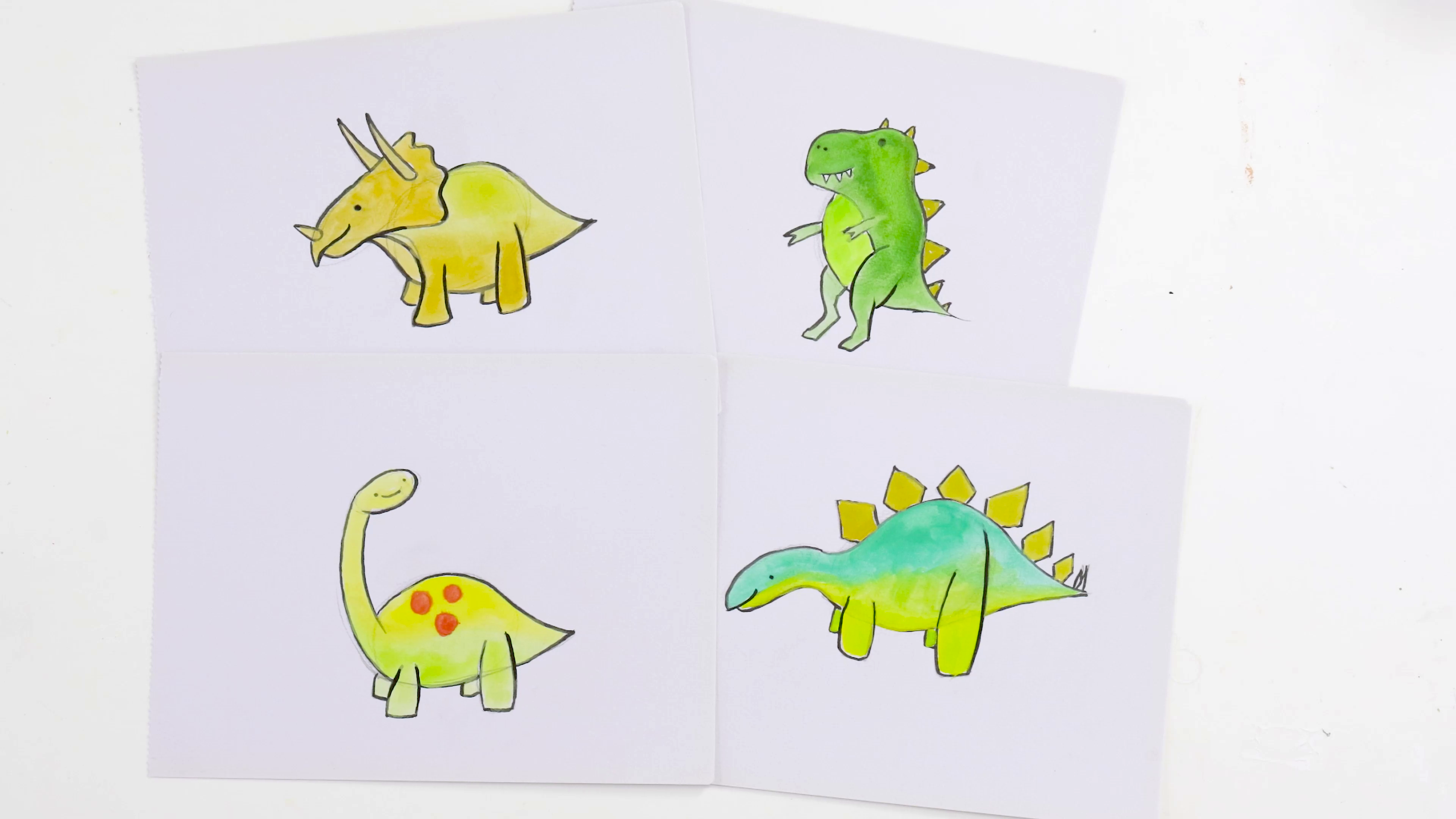Check out these nifty ink techniques to learn how to get the most out of your Acrylic Ink. You can create so many different effects with this versatile medium if you know how. So, follow along to discover how to try these techniques at home!
Splattering ink
Splattering your acrylic ink is a simple way to create abstract effects quickly. You can splatter ink by dropping it directly from the pipette onto your art surface. The trick is to hold the pipette a fair distance away from the paper – the further away, the more dramatic the splat.
You can also load ink onto a watercolour brush until it is dripping and flick the brush above the page. This will create less uniform, abstract splatters across the page.
Really, you can make a splatter effect with just about anything the acrylic ink will hold to (e.g., a toothbrush, your finger, a dip pen, etc.). Just make sure you shake or flick the ink with enough force that it soars off your chosen tool and onto the artwork, spreading out as it splatters. Get creative and have fun with it!
Stippling
Stippling with acrylic ink is easy – just use a dip pen, toothpick, or very fine watercolour brush to apply small dots to your art surface. The dots will blend together at a distance to create a bigger picture, shading, or details.
The closer together you place your dots, the darker the effect, while sparse dots create a lighter impression. Ink stippling is often done with one colour, typically black, and uses minimal linework to make Pointillism-style artwork.
You can also use stippling as a shading technique for any artwork, placing the dots closer together to represent darker areas of your subject matter.
Crosshatching
Like stippling, crosshatching with acrylic ink is easy to do. Grab a dip pen or fine brush and load it with ink. Draw parallel lines close together, and then cross over them with perpendicular lines so you create a tightly woven effect.
Crosshatching is great for creating shadows in your ink projects. Simply draw the lines closer together and cross them tightly for darker shading or do the reverse for mid-to-light tones. This technique can be used to add dimension and depth, so have a play at home and discover how!
Calligraphy
Calligraphy basically just means writing letters and words in a decorative style by hand. There are all sorts of ways to do calligraphy. You can follow rules and historical traditions or create your own style – the sky’s the limit!
Try hand lettering with acrylic ink using a dip pen or calligraphy pen. These traditional tools are handy for script writing; the well in the nib holds the liquid ink allowing you to to write about 2-3 sentences before dipping for more ink.
Start by dipping your pen nib into your chosen ink colour, tap the pen gently at the top of the jar to remove any excess ink, and then begin writing on watercolour paper at a 45° angle from the page. Press gently when writing, getting used to how the ink flows across the paper.
We have a bunch of handy info on calligraphy you can check out, including how to use our calligraphy pens and 10 calligraphy tips for beginners.
Using pen and ink
Acrylic ink and ink pens go well together. The ink is great for creating fluid colour placement, while the pens are perfect for adding details or outlining. This combo is super handy and commonly seen in classic illustrations and storybooks.
Map out your artwork with the ink, diluting it with water for a softer effect as you see fit. Wait until it’s dry and then add in your outlines and finer details using an ink pen, such as our Technical Drawing Pens, Graphic Fineliners, or Real Brush Pens. The Technical Drawing Pens are particularly handy, as they won’t bleed when wet so if you need to add in more ink, they will stay in place!
Water and ink
Adding water to your ink is a quick way to transform it into a watercolour-style medium. Mix your ink with water in a palette and watch the colours soften and transform. Apply them using a watercolour brush, using fine tips for details and mop brushes to cover larger areas. It’s best to use Watercolour Paper for this technique, as it’s made for mediums with low viscosity.
Being able to transition between strong pigments and watercolour is great for illustrations and abstract art with more freeform colouring styles. It gives you more control over the opacity of your ink, helping to create contrast and interest in your artwork.
Pouring ink
Acrylic ink can work well for fluid art, as it’s pigment-based (not dye-based), meaning it can be mixed with Acrylic Pouring Mediums and Paints. You can prime your canvas with some pouring medium before applying your mixed inks, so the surface is slick and creates smooth flow.
For a classic flip cup method, add different acrylic ink colours into a small amount of pouring medium, being careful not to mix them. Place your primed and wet canvas over the cup and quickly flip it so the cup is top down on the canvas. Lift it slowly and then tilt the canvas to spread the colours around.
Feel free to drop extra ink on the canvas after you’ve poured onto it, tilting to combine the additional ink with your existing colours. This is great for adding details and patterns to your design, bringing pops of colour and a focus point to your fluid art. Try using a straw or toothpick to work the colours in and finesse the details.
Acrylic ink can also be combined with Pouring Paints, including our SuperCell range, so you can create artwork with cells without extra mediums. The easiest way to do this is to use the inks to tint a white SuperCell or pour paint base colour, creating a softer colour range that’s great for pastel-pouring designs. You can then use your tinted pouring paints to try a bunch of different fluid art techniques, including flip cup, dirty pour, spin art, and more!
Dry brush technique
This technique is ideal for adding texture, dimensions, and layering colours. Using a dry brush, dip into your acrylic ink without soaking the brush and then apply it to your paper. Twist and turn the brush as you move it across the page, exposing dry sections of the brush so your ink application is broken and the paper beneath shines through.
Another way you can do this is to load your brush with ink and then wring or squeeze it out before taking it to the page. The colour should apply in an inconsistent, scratchy stroke, great for dynamic texture and colour layering.
Wet-on-wet technique
If you like creating smooth transitions between colours, this technique is for you! Start by laying down a wash of water to your art surface, before adding an acrylic ink colour to the wet area. Add a touch more water if needed to make sure your surface is still wet. Then add a second colour and use brushes, tilt your paper, or use other tools to mix the colours together and blend where they meet.
This method is perfect for creating colour gradients and backgrounds for your work, but it can also be used on a smaller scale by limiting water placement on the page before adding your colours.
Mixed media technique
Acrylic inks are perfect for mixed media projects because they dry to be permanent and water-resistant. As they’re pigment-based, rather than dye based, they won’t bleed or run if you layer other mediums on top of them, meaning you can use them with watercolours, acrylic paints, art pens, gouache, and more.
So, whether it’s for a scrapbook, multimedia artwork, craft project, journal, or some other creative pursuit, acrylic inks will work well with your other mediums.
Now you know a bunch of different ways to use Acrylic Inks, are you ready to experiment at home? You might even find a new fave technique to use for your next artwork!
We hope that you feel inspired to have a go and get creating. #montmarteart or tag us @montmarteart on Instagram or Facebook if you make something; we’d love to see what you come up with!Looking for more? Check out our tips and techniques page for more inspiration. If you need supplies or want to experiment with one of the techniques mentioned, jump online to check out our acrylic inks, watercolour paper, and pouring mediums.



































